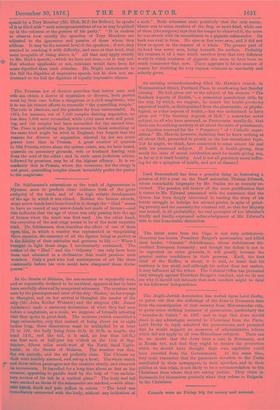Dr. Schliemann's excavations at the tomb of Agamemnon in Myeenae
seem to produce clear evidence both of the great antiquity of the tomb, and of the high artistic development of the age in which it was closed. Besides the bronze swords, stone arrow-heads have been found in it, though the " Iliad " seems to have no record of any arrow-heads not made of bronze ;—and this indicates that the age of stone was only passing into the age of bronze when the tomb was first used. On the other hand, the execution of the seal-rings seems to be of the most exquisite kind. Dr. Schliemann thus describes the effect of one of them upon him, in which a warrior was represented as vanquishing three enemies, the anatomy of all the figures being as perfect as is the fidelity of their attitudes and gestures to life :—" When I brought to light these rings, I involuntarily exclaimed, 'The author of the " Iliad " and the " Odyssey " can only have been born and educated in a civilisation that could produce such wonders. Only a poet who had masterpieces of art like these continually before his eyes could have eomposed those divine poems.'"


































 Previous page
Previous page